
Neck Sharpies: Rock, Paper, Scissors, Candle

When we went into the season talking about how Gattis was going to upgrade the passing game by tying it to the running game, utilizing modern techniques like run-pass-options, and making use of the old/large and young/scatty talent assembled for him, what we meant was game plans like the one Gattis had in store of Indiana. Like…I dunno… this wheel route to Giles Jackson.
I know it's either ten games too late (or one game too early) for Michigan's offense to be doing things a fully operational modern spread battle station ought to be, but we might as well look at it and appreciate how it works when it works this brilliantly.
How did we get here? Let's rewind. Past Giles beating a linebacker. Past the play-action that removed safety help. Past the previous run-pass option this this play-acting, the run-pass option that was play-acting—all the way back to last year when Warinner and Harbaugh installed Michigan's base running game, and last spring when Gattis got ahold of it.
[After the JUMP: It looks like the thing that looks like the thing that looks like the thing that looks like a thing you have to overreact to]
Rock
That running game likes to put multiple tight ends to one side, run pun & pulls that way, and all kinds of runs out the weakside. For example, Counter Trey:
Counter Trey is a slow-developing counter run where you block down on the playside tackle and pull multiple guys from the backside for the two crucial frontside defenders: a guard to kick out an unblocked edge defender, and another guy from the backside (usually a TE or a tackle) to lead block into the frontside linebacker, with the back cutting off that block in the hole.
The plan here is to 1) Block down on the playside tackle, doubling to the MIKE, thus setting the inside wall of the gap. 2) Kick out the playside DE with the backside pulling guard to pry open the other side of the gap, 3) Bring a second puller (backside TE or OT) as lead blocker through the gap to take out the playside LB, and 4) Have the running back take a false step to freeze defenders to the backside, then cut behind the second puller and follow into the gap.
A canonical example:
This play works exactly like Pin & Pull except it's run to the other side and has a counter step, or exactly like split zone except instead of hitting quickly Counter Trey will swing a lead blocker around from the way backside and pop an unblocked guy in the gap. They're both gap-blocked plays that are trying to pry open that gap the same way: trap an edge defender to pop open the outside of the gap:
…use your frontside big heavies to seal the inside of the gap,
and pop through with a lead blocker pulled from the backside of the play, usually an offset tight end or fullback. The arrival of your lead blocker should turn what was one gap into two, with the running back running off the lead's back.
Freezing Defenders Who Might Stop Counter Trey
Let's assume your blockers can manage their assignments and your OC hasn't completely tipped off the defense, defenders can still do a lot of things in the course of sound execution to attack these backside trap runs. With Counter Trey those linebackers are the most likely culprits to mess this play up. If the edge crashes hard before your kicker can get outside there could be no gap. If you can't get the backside linebacker blocked down, either he uses up the lead blocker intended for his frontside buddy, or is unblocked himself. If the frontside linebacker leaps into the backfield, the lead block could occur in a spot where there's no room to run off his back. The last defender who's likely to turn your well-blocked counter trey into a pile of bodies at the line of scrimmage is a safety playing aggressively against the run.
The promise of #SpeedInSpace is that it should help you deal with these threats, punishing any kind of behavior that's detrimental to the base play.
We've discussed a few of these ideas along the way in case the counter action doesn't do the trick. Threatening the edge can keep the EMLOS responsible, and you can drill your kickout and puller to swap jobs on the fly if the edge guy needs to be blocked inside instead. You can RPO the backside LB away by making the QB the runner and running your RB on a flare screen, then add an RPO slant to that, or don't RPO but make the RB a lead blocker. Or you can read the backside to free up a lineman and zoning the backside to create a extra blocker he has to get around. The frontside LB can be nerfed by threatening backside gaps to the point where he feels the need to stay back and watch the play develop, but you can also pile on by flashing speedy attacks going the other way across his face, or if he jumps outside, just have your "downblocker" prepared to turn the other way and seal his ass there. Bubble action and properly threatening receivers can keep any overhang defenders outside.
But what about the safety?
Can you make that guy's world feel like it has an Ohio State in it too?
Paper
One of the ways Michigan's been dealing with him is that RPO slant they favor. This RPO is a split zone not a Counter Trey, but it's very close to the same play, losing the lead blocker in an attempt to hit the gap before the linebackers can close. Michigan's in 2nd and long and down 7-0 against MSU when they pull this out:
The guy being read is the playside linebacker—if he's coming down against the run that opens a pass between him and the safety. In this case that's…well that's an awful lot of room.
That's a quarters safety who knows he's all alone with Nico Collins on anything deep, and giving a 15-yard cushion. But who says he has to?
Scissors
Early in the Indiana game Michigan found itself in 2nd and long again. They set up in the same formation and ran what, for a second, looked like the same kind of RPO—Counter Trey instead of split zone, sure, but for the players in a run-pass conflict it's all the same. Note what the safety at the top is doing however.
This ain't no cowardly Spartan. Rather than cede the run, Indiana has chosen to let its linebacker still come down on the gap when he sees it, with the safety coming down to replace him in coverage. This is nothing new (it's in fact how Penn State stumbled onto how to make Cover 3 work as a base defense in the 1970s). In fact, it's so easy to anticipate that Michigan's actual RPO was attacking it:
It's not the playside WLB Shea's reading here but the safety, who's charging straight down the hash mark to replace his linebacker.
If he's charging down on run action that leaves a cornerback with no help against Nico Collins. There's no way in Columbus that cat is going to be jumping routes; soon as that safety charges up our corner is going to be bailing for depth, happy to give up five yards if it comes to that and hopeful to keep it just to that. Patterson has an easy read, easy pitch-and-catch, and a makeable 3rd down. If his wee little cornerback arm can't get Collins down it's a lot more:
He does, and the safety arrives to apologize. Let this be a lesson, #29. Stay the hell away from our RPOs or we'll run Nico at your friends all day.
Does he listen?
Candle
Later in the same drive Michigan again gets caught in a 2nd and long. Giles Jackson comes in as the running back, which is kind of weird. The same Indiana boundary safety notices and points it out. On the snap the frontside is blocking down and the backside guard is pulling, which is a Power play not Counter Trey, but for our safety and linebacker it's all the same. Let's see how the Hoosiers are responding:
Don Brown approves: rather than surrendering to the RPO, IU is once again bringing the frontside linebacker down hard against any run action—situation be damned—and replacing him with the safety. If Patterson hands off there's a linebacker plugging the gap that not even Onwenu can do anything with, and a safety ready to replace outside. If Patterson keeps and throws the pass, now the safety is moving down to replace the linebacker's zone. This time he's even coming down a few yards outside of the hash marks to be in position to break on a curl. Run: dissuaded. Pass: bracketed.
What are you going to do now, Shea?
Oh.
Wheeeeeeeeeeeeeeeee….
…eel.
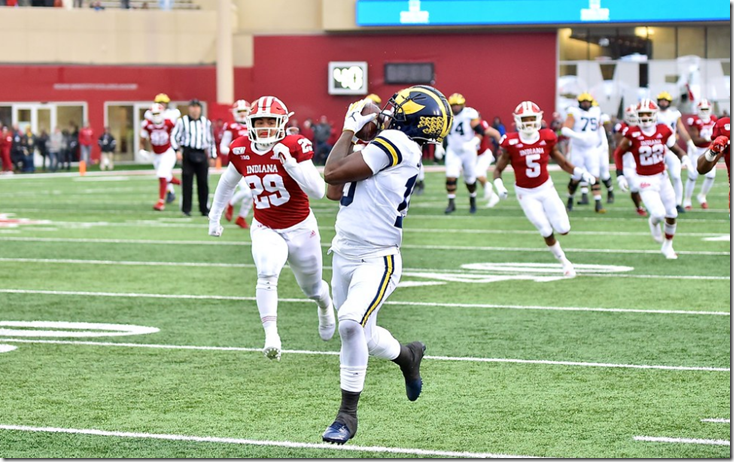
[Fuller]
#SpeedInSpace.
Lessons
Look, if you're Ohio State you can cover whomever you want with whatever you want and they'll be fast enough that it'll all work out for you. Everything does. But mortal soul-having people have limitations. And #SpeedInSpace is about messing with those limitations by matching them against greater abilities.
Ingredients:
- Good run blocking.
- Dangerous outside receivers you can't cover 1-on-1 all the way down the field.
- A really fast slot receiver.
- QB who's accurate downfield.
The run blocking is important because it necessitates the defense plan to stop that first. You can't just sit back, wait for the blocking to develop, then shoot at that. Linebackers have to fire. The outside receivers' threat as jump ball merchants is deployed in the run-pass option to attack that: if your linebackers fire down you have to replace them with a safety. Gattis checks this first with a successful RPO that works because of the threat of the receiver. And when he gets in that situation again on the same drive, he replaces his regular back with the faster of the two new jet smurfs, pulls the linebacker and safety down with the RPO look, and hits them over the top. Shea doesn't miss.
How do you defend that? Simple: stay the hell away from our running game, or else get yourselves a safety who can both threaten the top of an RPO when the linebacker blitzes and still get back to cover a wheel route. You know, like Michigan and Ohio State.
November 27th, 2019 at 8:49 AM ^
I know you mentioned it in your very last sentence, but I have a sneaky suspicion that we will send a nice wheel route out of the backfield with someone like Christian Turner at some point in this game for a nice chunk.
November 27th, 2019 at 9:47 AM ^
How about Jackson and Sainristil both in as RBs for double wheel routes
November 27th, 2019 at 10:24 AM ^
has Turner caught a pass this year?
not sure he is the one to do that play but could be a secret weapon. that being said now that we showed this to osu last week I bet we run Jackson into the backfield and come up with a different way to attack them off of this action since the LB will be bailing after Jackson.
we will need several big plays in this game to stay with the buckeyes.
November 27th, 2019 at 11:29 AM ^
That would be awesome if they sent a LB to cover Jackson. Would be revenge for the way they abused Watson.
November 27th, 2019 at 8:53 AM ^
Dangit. I wish OSU didn't have guys on defense to defend this. I want an Indiana 2.0 on Saturday.
Nice write up.
November 27th, 2019 at 11:39 AM ^
We can still run it, we just need the same 4.0 seconds it took to get the pass off vs Indiana.
Oh, I see your point.
November 28th, 2019 at 5:13 PM ^
Aaah, there's the rub.
November 27th, 2019 at 8:54 AM ^
Reading this I couldn’t help but think the way to beat it is to be slow in bringing down your linebacker and safety on run action. I.e. make Michigan hand it off.
When Clemson beat Alabama last year they said they did exactly that by respecting the pass on the RPOs and left the run game to their D line.
In hearing Sam Webb this week say that the offense is more Alabama than 2018 Michigan, I can now see that with how you defend it. Will be interesting to see if OSU slow plays our RPOs and if we can execute if they do.
November 27th, 2019 at 9:08 AM ^
Harbaugh is running the long con:
He hired somebody to build up all this other stuff just so opponents would eventually dare Michigan to run the ball.
November 27th, 2019 at 11:18 AM ^
Clemson also had an all-world DL. OSU has a very good one, but not quite to that level. I don't think Michigan would mind mashing Haskins and Charbonnet for 4 YPC. Keeps the OSU offense off the field.
I know that sounds horribly similar to last year's approach, but last year's approach wasn't flawed. It's a good idea to run the ball on OSU if you can, killing clock. What last year didn't have was an answer to the defense getting murdered, that is, the offense couldn't keep up. Couldn't even try to, really, given they hadn't done it all year.
This year they (hopefully) have an offense that knows how to attack and score if needed. But if OSU decides to give Michigan a running game, you take that. You can still take your shots with Collins/DPJ/Bell when needed.
November 27th, 2019 at 11:53 AM ^
I agree with this and think thats what we will see. I think there would be some turnovers in this game (hopefully favoring M) and that'll keep it low scoring. In that situation, run the ball, keep OSU offense off field and tire out OSU DL - kinda like how PSU DL was huffing and puffing in 4th quarter against M.
With that script, win a ball controlled game.
November 27th, 2019 at 6:14 PM ^
Good points. The OL's pass protection will be huge. If we are in lots of 3rd and longs, ball control gets way harder.
November 27th, 2019 at 8:56 AM ^
I'm going to start referring to my twitter game as a "pun & pull offense"
November 27th, 2019 at 10:15 AM ^
Just gave you a extra plus one for that.
November 27th, 2019 at 12:41 PM ^
My whole FB page for years.
November 27th, 2019 at 9:15 AM ^
Giles' blurry image running past the backer is a thing of beauty.
November 27th, 2019 at 9:42 AM ^
Yeah it’s nice to be on the other side of that now....Barkley on McCray was depressing
November 27th, 2019 at 9:41 AM ^
Good shit Josh
November 27th, 2019 at 9:50 AM ^
These are always excellent, thanks for the work you put into them.
I can't get over how quickly Jackson gets so deeply downfield. Live I didn't realize it was a wheel route, I thought to myself where did he come from. I assumed he was a WR running a go route offscreen. That is dynamite explosive.
Why didn't Black take his defender on a post route though? Or otherwise drag him across the field? It's zone on the other side but Black is in man coverage isn't he? It's a TD if Black simply takes his route somewhere other than the exact path that Jackson will get to if the pass is completed.
November 27th, 2019 at 9:55 AM ^
I wondered about that too. Black's route, or at least the tail end of it, is weird.
November 27th, 2019 at 12:43 PM ^
Seth, for me, this was your best ever. The ideal of a fully weaponized M offense.
And, I think, if everyone overplays the run action, you have the QB keep.....
November 27th, 2019 at 3:30 PM ^
Everything is coming together in one big package.
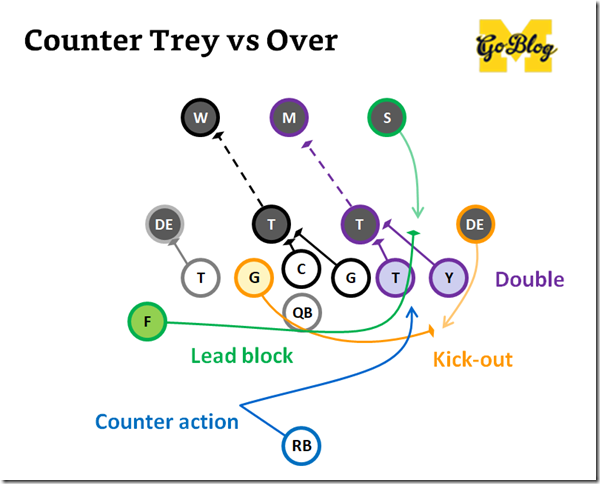
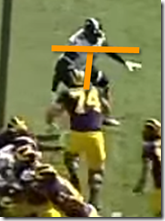
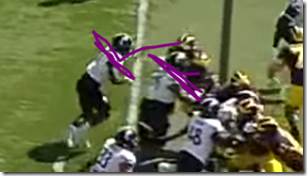
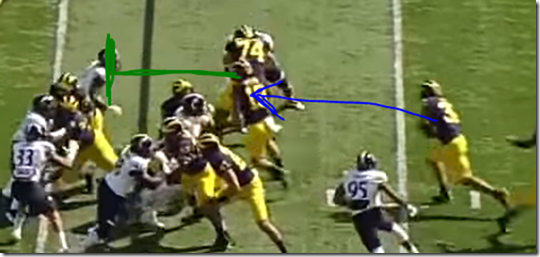
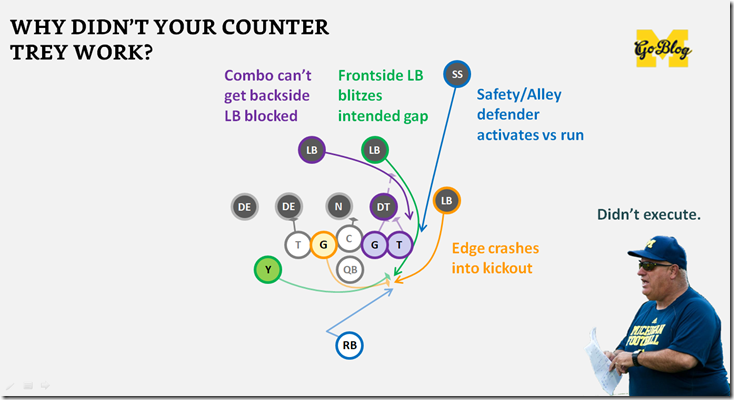

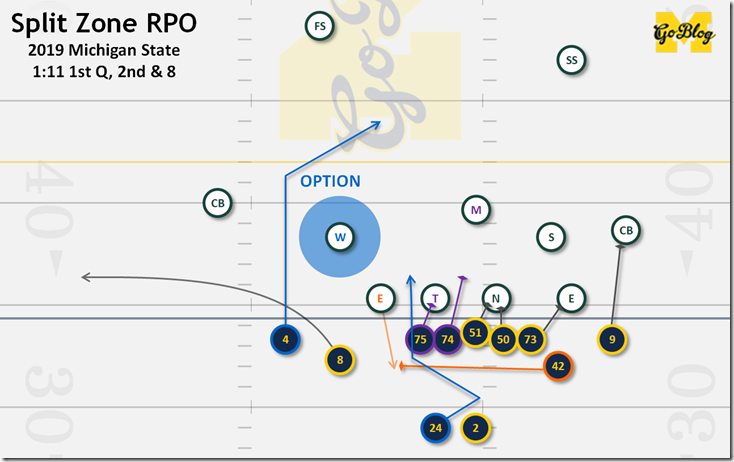
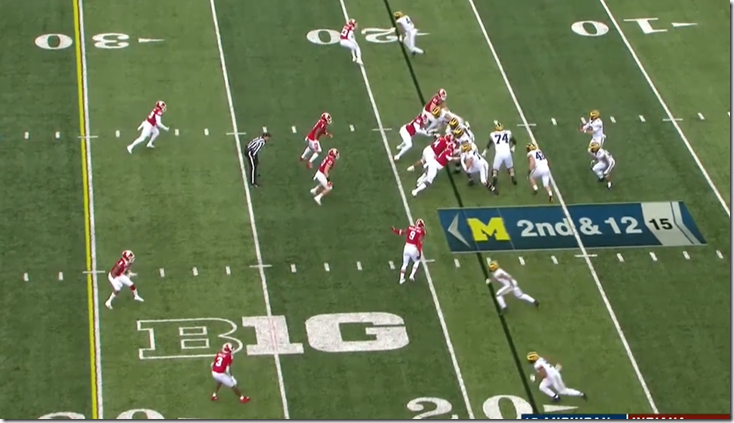

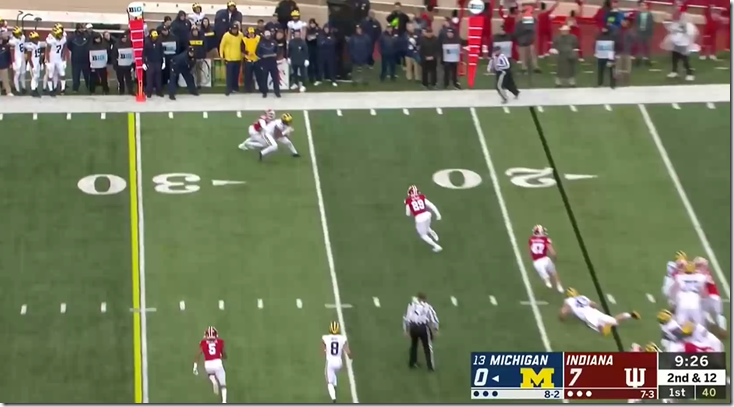

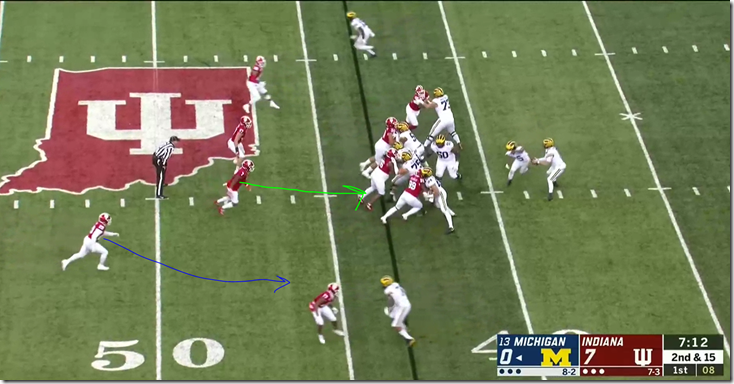
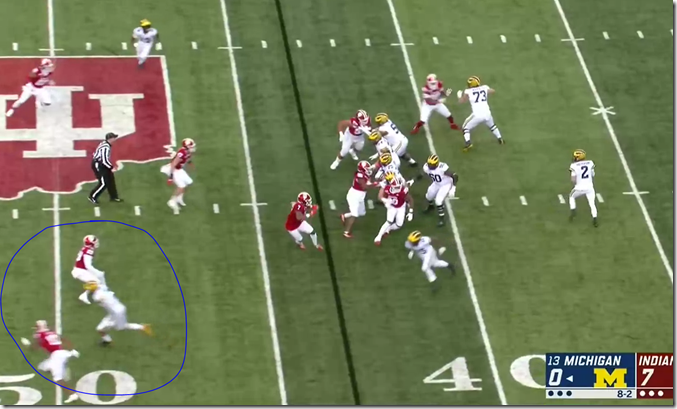
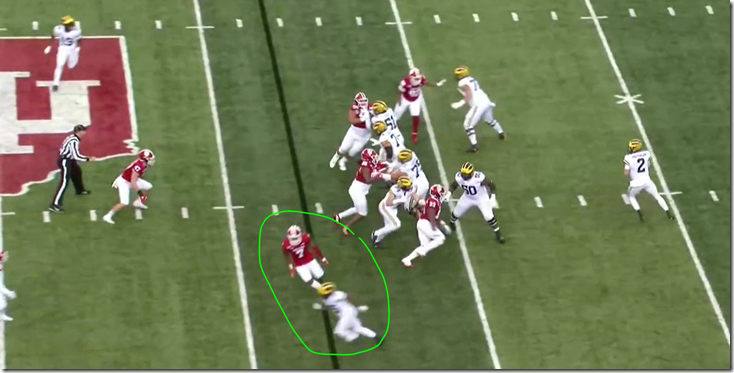
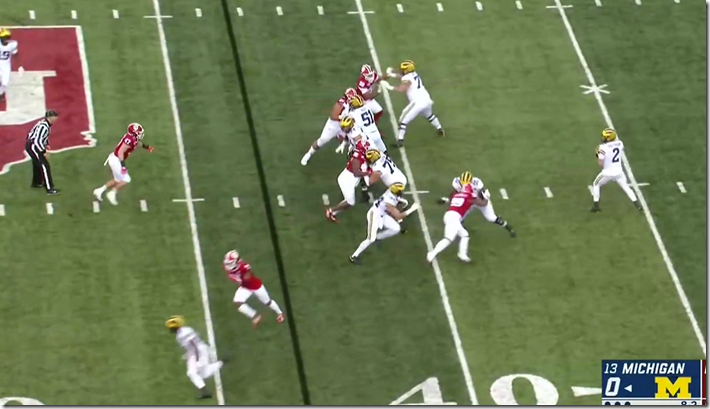
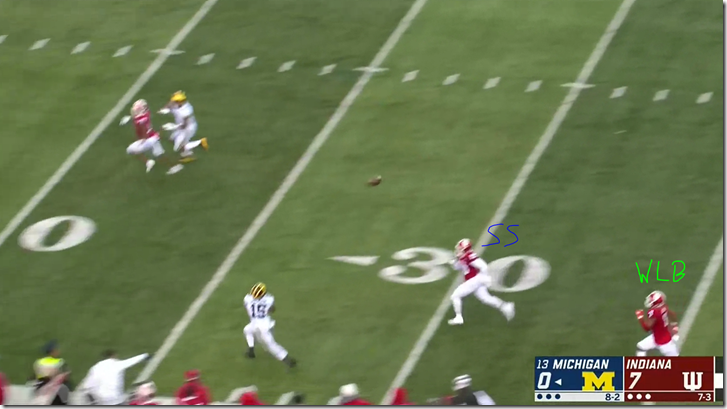
Comments